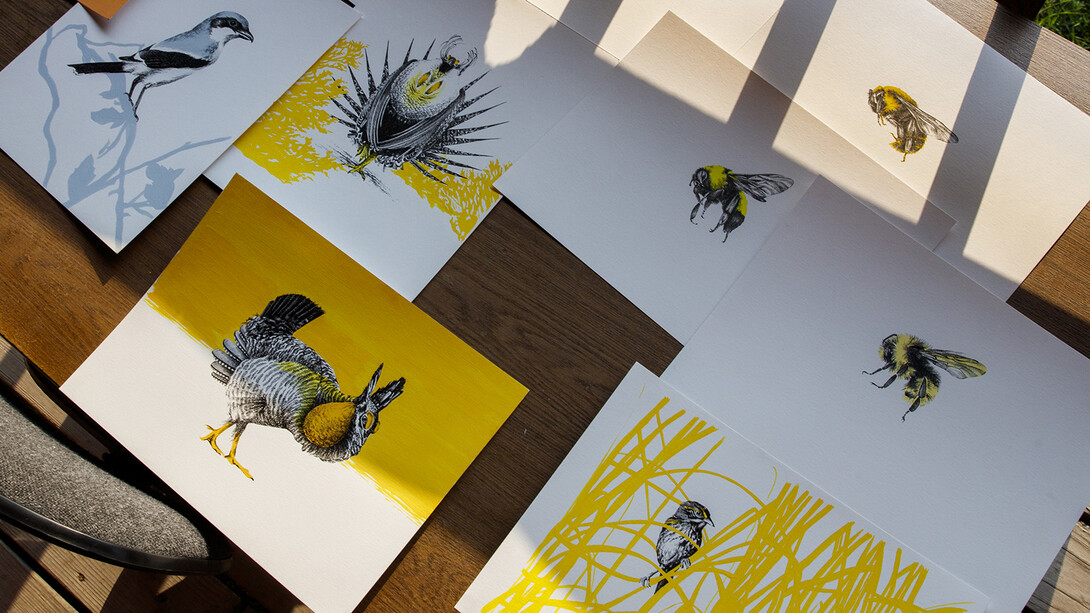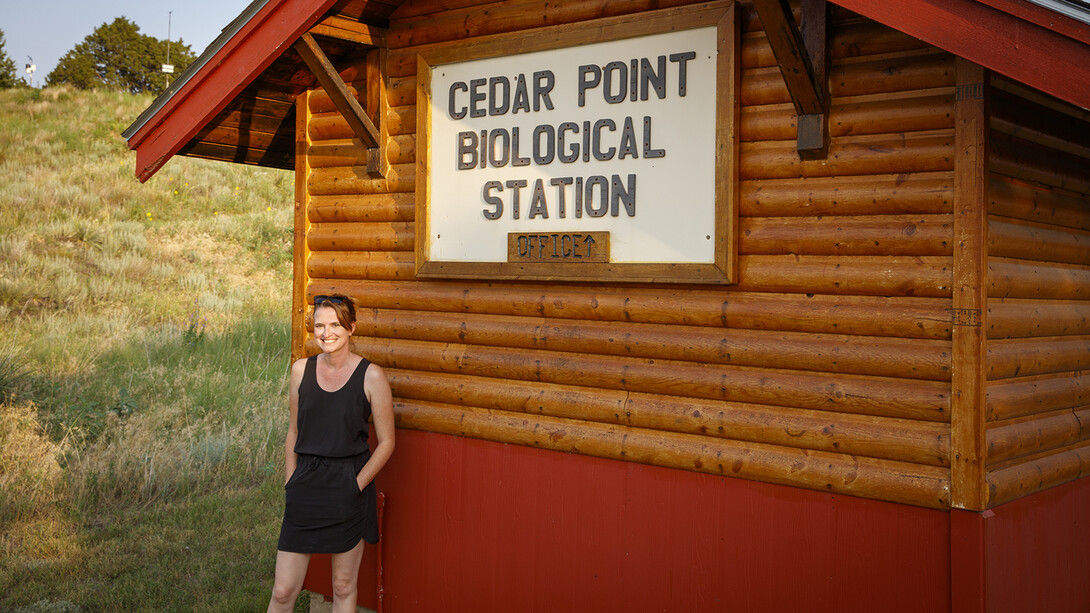
Sarah Kaizar’s first impression of Nebraska was molded by the expansive views of the western border. In her rental car she’d picked up earlier that day in Denver, she made her way through the unbroken landscape that allowed her to see for what felt like miles upon miles.
After three hours or so, the Philadelphia-based artist had made it to her destination: Cedar Point Biological Station.
Cedar Point is a field-based experiential classroom and research facility by Lake Ogallala in western Nebraska. It provides University of Nebraska–Lincoln students, faculty and staff an opportunity to live, work and study in the surroundings of western Nebraska.
Built in 1960 as Cedar Point Range Girl Scout Camp, Cedar Point was purchased by the university from the Gainesforth family in 1975. The station has traditionally hosted a variety of scientific research projects, including courses in parasitology, herpetology and biology. In recent years, it’s also become a space for artists and poets.
Offered since 2014, the artist-in-residence program has hosted 40 creatives like Kaizar, each seeking the retreat to hone their craft.

As one of the station’s artists in residence for summer 2021, Kaizar had planned and prepped to spend a week connecting with her artistic endeavors in the quiet of her cabin. But within a few hours of her first day, she realized her view was too good to miss — so she pulled her desk out onto the deck to fully submerge herself in the rolling Nebraska plains.
“The purpose of the artist-in-residence program is similar to that of many programs — give the artist time and space to create,” said Hannah Demma, the program’s coordinator. “We have the added benefits of the beautiful western Nebraska landscape, as well as a fully functioning biological station with researchers available for conversation with the artists, which we hope will lead to future collaborations between the disciplines.”
With pencils and paper in hand, Kaizar got to sketching. Her goal for the week of her residency was to complete a few illustrations for an upcoming book project. The book, which is in works with Mountaineer Press, will focus on endangered species of flight. During her time at Cedar Point, Kaizar focused on illustrations of the winged birds and bugs that would be native to the prairie setting — from bees and small birds to ornate chickens filled with delicate feathers.
The opportunity to stay at Cedar Point provided a break in Kaizar’s balancing act of working as both a graphic designer and illustrator. Instead of carving out time after work or bringing her sketchbook out on weekends, she was able to spend a solid week devoted solely on her art.
“I’m really enjoying a lot of time to just focus,” Kaizar said.
In the seven years that the artist in residence program has been available, creatives from across the country and across disciplines have made Cedar Point their home. While the camp typically hosts visual artists and even poets, Demma notes that they’d love to see musicians or songwriters take advantage of the opportunity.
During the one-week to two-week stretch of their residency stay, artists are invited to partake in all the accommodations of the Cedar Point lifestyle. The daily structure of communal meals gave Kaizar a set schedule to form her days around. From the 7 a.m. breakfast call to the 5:30 p.m. dinner, she’d use her pockets of time in-between meals to chip away at her project.

And when she needed inspiration during lulls of creativity, all she had to do was watch as the camp visitors around her puttered to and from their classes, cabins and laboratories.
“You’ve got that like little buzzy energy,” Kaizar said.
In between sketches on the porch, dinners in the dining hall and conversations with campers, Kaizar spent her time soaking in the sights of Cedar Point through walks along the lake. Unlike many artists in residence programs, Kaizar didn’t have to complete any deliverables by the end of her stay. Her time at Cedar Point was to be devoted to herself — to her artworks, to her research, and to her own experiences as an artist.
“That open ended-ness was a lot of freedom right there.” Kaizar said.







